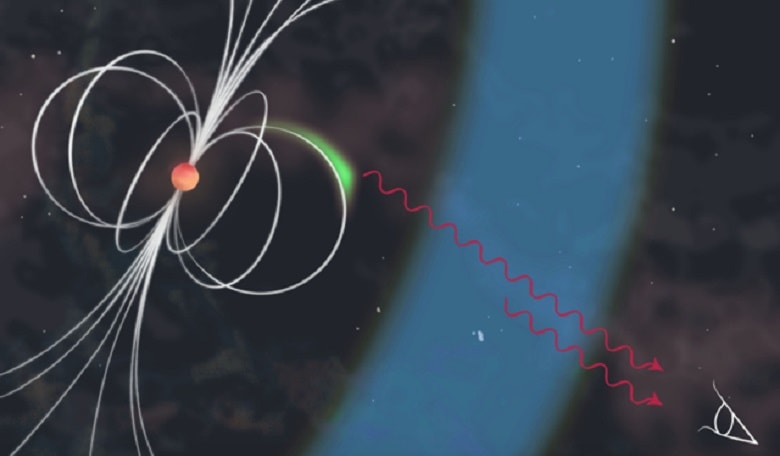A neutron star in the centre of the supernova of 1054 A.D., known as the Crab pulsar, has been observed by scientists to produce the most energetic pulsed emission radiation ever detected, contravening all the theory models believed to be at work in neutron stars.
The Crab pulsar was first observed in 2011 by the Major Atmospheric Gamma-ray Imaging Cherenkov (MAGIC) observatory and the Very Energetic Radiation Imaging Telescope Array System (VERTIAS), when at the time, researchers unexpectedly observed a burst of very energetic photons. Recent follow up observations by MAGIC on the pulsar have now revealed outbursts with even greater energies, prompting researchers to have a re-think on where this emission is generated.
"We performed deep observation of the Crab pulsar with MAGIC to understand this phenomenon, expecting to measure the maximum energy of the pulsating photons,” said Emma de Ona Wilhelmi from the Institute of Space Sciences (IEEC-CSIC, Barcelona) and Principal Investigator of this observation program. “The new observations extend this tail to much higher, above TeV energies, that is, several times more energetic than the previous measurement, violating all the theory models believed to be at work in neutron stars,” continued Roberta Zanin from ICCUB-IEEC, Barcelona.
The Crab pulsar, is a left-over remnant star thought to have formed by the gravitational collapse of a once massive star after a supernova explosion. This explosion was then responsible for creating the Crab nebula, a phenomena that was noted by Earth-bound chroniclers as early as 1054 A.D. The remaining compact and very dense neutron star, is so-called because the star’s main constituent is neutrons, produced when the collapsing core essentially melts protons and electrons into each other to form neutrons.
This particular pulsar has a mass of 1.5 times that of the Sun but concentrated in an object about 10 kilometres in diameter. It rotates 30 times per second and is surrounded by a region of intense magnetic fields, ten thousand billion times stronger than that of the Sun. The rotation of the magnetic field is so strong it is enough to dominate the motion of charges, forcing them to rotate at the same rate as the stellar surface. This region, called the magnetosphere, also generates intense electric fields that tear electrons from the surface, sending a stream of subatomic particles outwards that produce beams of radiation akin to beams of light produced by a lighthouse. This radiation can be observed only when the beam of emission is pointing toward Earth and is thus responsible for the pulsed appearance of the emission, generally observed to consist of radio and X-ray beams.
This type of radiation is traditionally thought to originate within the magnetosphere. Conversely, the TeV beams observed by MAGIC are thought to form on the far end of the magnetosphere or outside it, in the ultra-relativistic wind of particles around the pulsar in a region that is able to accelerate electrons to such high energies they can escape the large absorption in the magnetised atmosphere. Surprisingly, however, the TeV beams arrive at the same time as the radio and X-ray beams. This tight synchronisation of the beams at different energies implies that the bright radiation observed in the multi-wavelength spectrum is produced altogether in a small region, rather than in two separate areas as originally thought. “How and where this effect is achieved in such a small region challenges our knowledge of physics,” adds David Carreto Fidalgo from Complutense University of Madrid.
Before the MAGIC observations, radiation from the Crab pulsar was believed to stop abruptly when the photons reach a energy few billion times larger than visible light, now however further measurements will be required to test theories once thought to be steadfast, “where and how this TeV emission is created remains still unknown and difficult to reconcile with the standard theories,” explains Daniel Galindo Fernandez from ICCUB-IEEC, Barcelona.
MAGIC Spokeperson Razmik Mirzoyan from the Max Planck Institute for Physics (MPP) in Munich (Germany) says: "This is another very important result achieved by MAGIC on the puzzling celestial object, which incidentally besides the Sun is the most investigated one in all energy ranges. We revealed significant features of this enigmatic object thus providing substantial input to our theory colleagues - now it is their move to explain how the things are at work."











